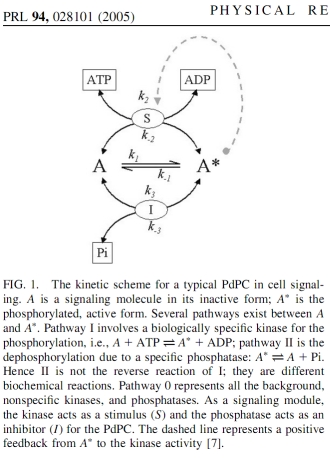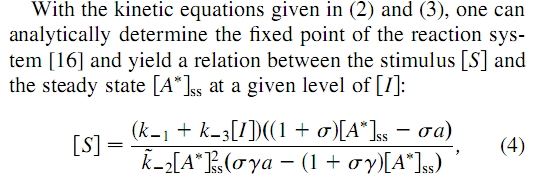[From Bill Powers (2010.02.17.0920 MST)]
In high-school physics I got fascinated by all the simple equations
relating mass, energy, force, distance, velocity, and acceleration. As I
played with them I realize that they were all related to each other. But
when I asked the physics teacher about that, he just said that the actual
mathematics was much more complicated, and that I was wasting my time. So
I went on to other things.
But there’s still that same fascination. Look at this:
Start with the relationship between velocity and acceleration:
Velocity V is equal to acceleration A times elapsed time t:
(1)V = AtSquare both sides (^2 means an exponent of 2):
(2) V^2 = (A^2)(t^2)
Divide both sides by A:
(3) V^2/A = At^2
Now introduce the relationship between distance traveled X and
acceleration A:
(4) X = (1/2)At^2From equation 3, substitute V^2/A for At^2 in equation 4:
(5) X = (1/2)v^2/A
Multiply both sides of (5) by F for force:
(6) FX = (1/2)Fv^2/A
DEFINE energy E as the product of force F times distance X (distance
means the distance through which a force applied to an object moves
it).
(7) E = FXSubstitute E for FX in (6):
(8) E = (1/2)Fv^2/A
DEFINE mass M as Force divided by acceleration A:
(9) M = F/ASubstitute M for F/A in (8):
(10) E = (1/2)Mv^2
That is the equation for kinetic energy.
We can now combine (7) and (10) to eliminate E:
(11) FX = (1/2)MV^2
We have now shown that the product of force times distance is equal to
(1/2)MV^2, without energy appearing in the equation at all. We have
derived the equality of kinetic energy to potential energy or energy of
position without any observations of nature, simply by using two
fundamental equations:
(1)V = At(4) X = (1/2)At^2… and introducing two definitions:
(7) E = FX(9) M = F/AEquations 1 and 4 are basic factual observations, properties of space
and time at velocities that are low compared with the velocity of light.
The quantities called mass and energy are defined in terms of measurable
variables F, M, and A; neither mass nor energy is directly measurable. To
measure energy you apply a force to a constrained object and measure the
distance through which it moves. To measure mass you apply a force to an
free-moving object and observe how it accelerates.
I don’t recall how I worked all this out in high school far enough to ask
the physics teacher if we couldn’t just eliminate energy and mass from
all equations. He definitely didn’t like that idea. But as I return to
these ideas 67 years later, I can’t help feeling the same doubts about
the reality of energy and mass. They’re inventions, not
discoveries.
Much of physics has been built up this way, accumulating an ever-growing
superstructure made from mathematical manipulations of basic observable
quantities. How much of physics has simply been invented and defined into
existence? That’s what I wanted to know in 1943 or so; I still
wonder.
Best,
Bill P.

 I confess that I got lost in the equations that led up to this, so
I confess that I got lost in the equations that led up to this, so
 I confess that I got lost in the equations that led up to this, so
I confess that I got lost in the equations that led up to this, so